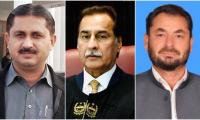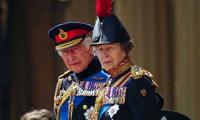The State Bank of Pakistan has continued its policy of monetary tightening – despite its limited impact on reducing domestic government lending. On Monday, the SBP, contrary to the advice of the business community, undertook a massive 1.5 percent hike in the policy rate. With the policy rate now at 12.25 percent, the SBP has made domestic borrowing extremely expensive for the government as well as the business sector. The central bank has explained this away by referring to the need to control rising inflation, a widening fiscal deficit and expected increases in gas and electricity tariffs. With the change in leadership at the helm of the SBP, the hike in interest rate has swiftly followed the depreciation of the Pakistani rupee. While the federal government and the SBP have insisted that these moves are meant to ‘stabilise’ the Pakistani economy, the public response to the measures suggests that there is a state of panic. The SBP itself has noted that inflation will only increase next year, which quite swiftly undercuts its own reasoning for tightening the monetary policy. The logic of reducing money supply and increasing the policy rate is usually to reduce inflation in a time of low growth.
It is clear that the next year will be another year of low growth – but one wonders if at this moment it is wise to enact policies that bring investment down to zero. Borrowing is at the heart of all commercial activity in the economy, especially those geared towards exports. It would take no genius to understand that Pakistan needs to increase its exports to reduce its current account deficit. This would require pushing the interest rate down, rather than up. Similarly, increasing the policy rate will do more damage than repair if government borrowing does not shrink. The most immediate impact of the hike in policy rate will be to increase the already fast-growing debt-servicing costs that the government is paying. Instead of fulfilling its promises to shrink the fiscal deficit, the PTI government has managed to increase it by 2.4 times of what it was last year, despite cutting development spending by half.
Claims that such policies consider a ‘holistic’ picture of the Pakistani economy seem to be out of touch with ground realities. Growth rates are low, inflation is high, export growth is slow, and the current account deficit remains out of control. None of this will change next year – and there is nothing to suggest that there will a way back from these policies any time soon. There is a fear that more and more people will try and buy dollars to protect the value of their money – which is the exact opposite of what the government wants. One can justify unpopular measures if they take into account the real picture of the economy. Instead, it appears Pakistan is stuck in economic dogmas that could lead to a deeper crisis.
Representational image. —APP/FileIf you live in Karachi, or anywhere else in Pakistan for that matter, you have...
Screengrab shows X services down in Pakistan. — Geo.tvIt has been two months since social media platform X has been...
Health experts estimate an 8.0 per cent and 5.0 per cent increase in hepatitis B and C related deaths, respectively,...
PTI has managed to carve out a tough-to-defeat position in Pakistan’s politics and polity both
Rain on Sunday alone led to the deaths of 12 people – two in Balochistan, six in Khyber Pakhtunkhwa and four in Punjab
India seems to be following Israel model of carrying out assassinations on foreign soil of people it sees as a threat...







